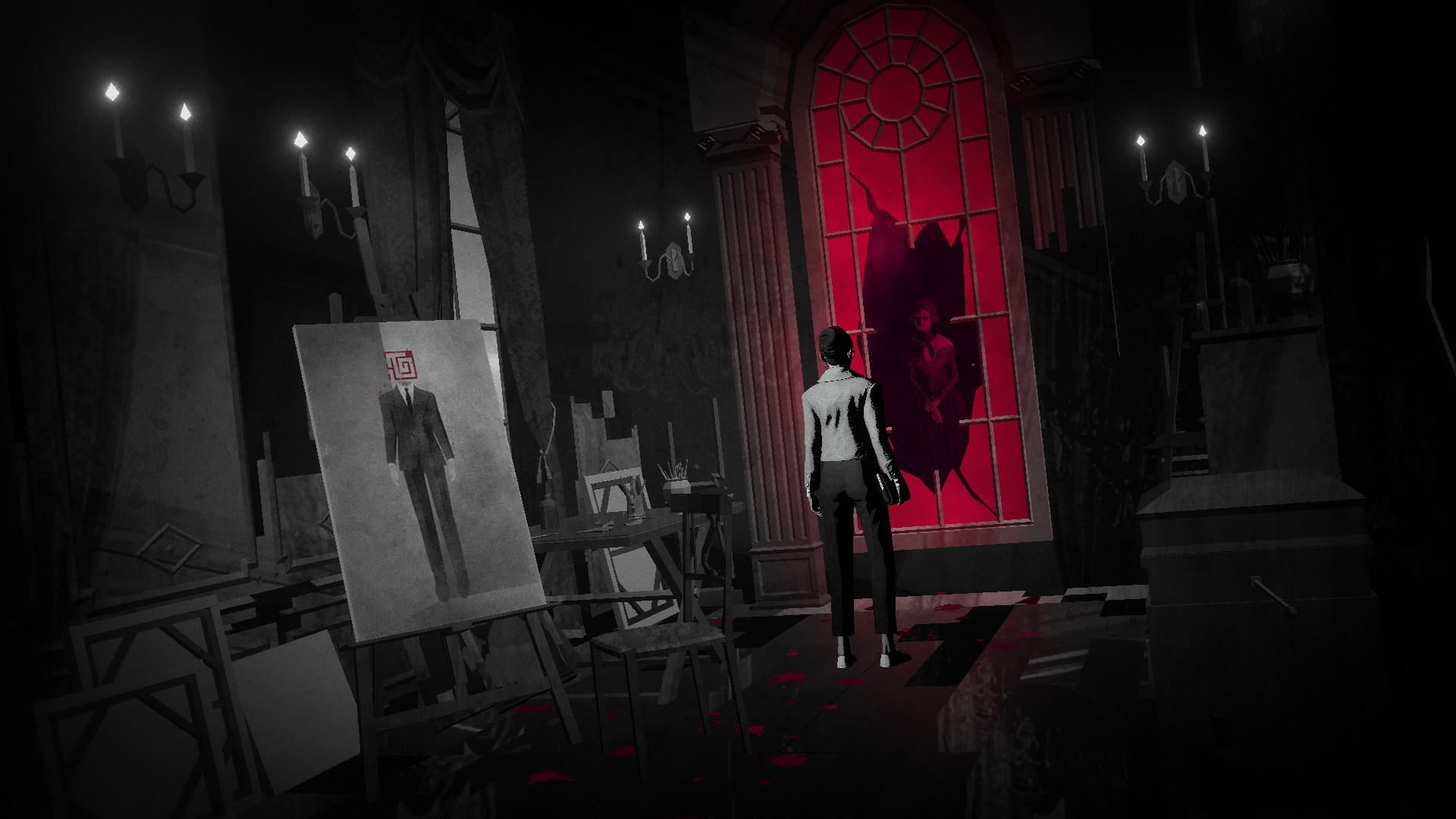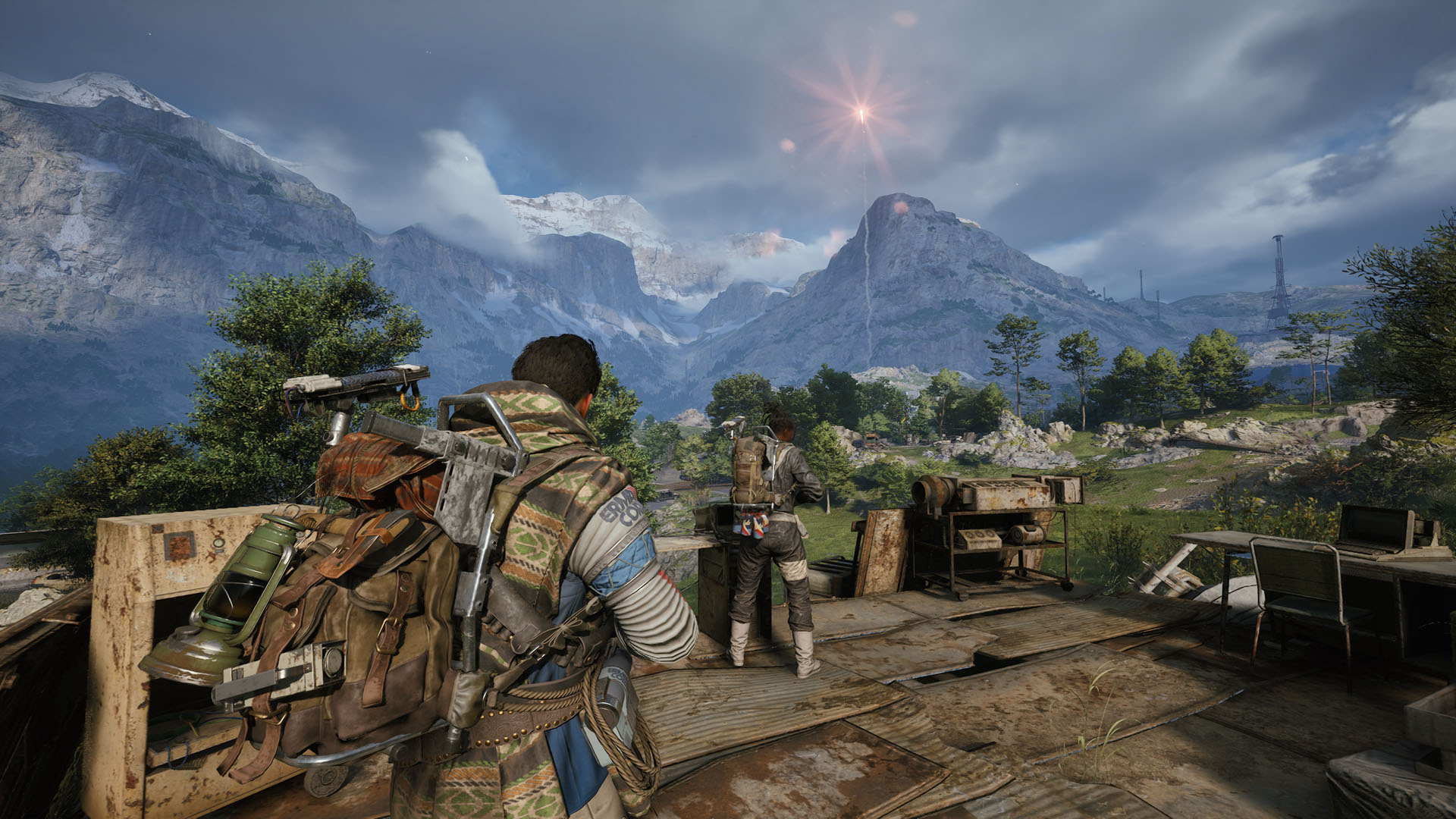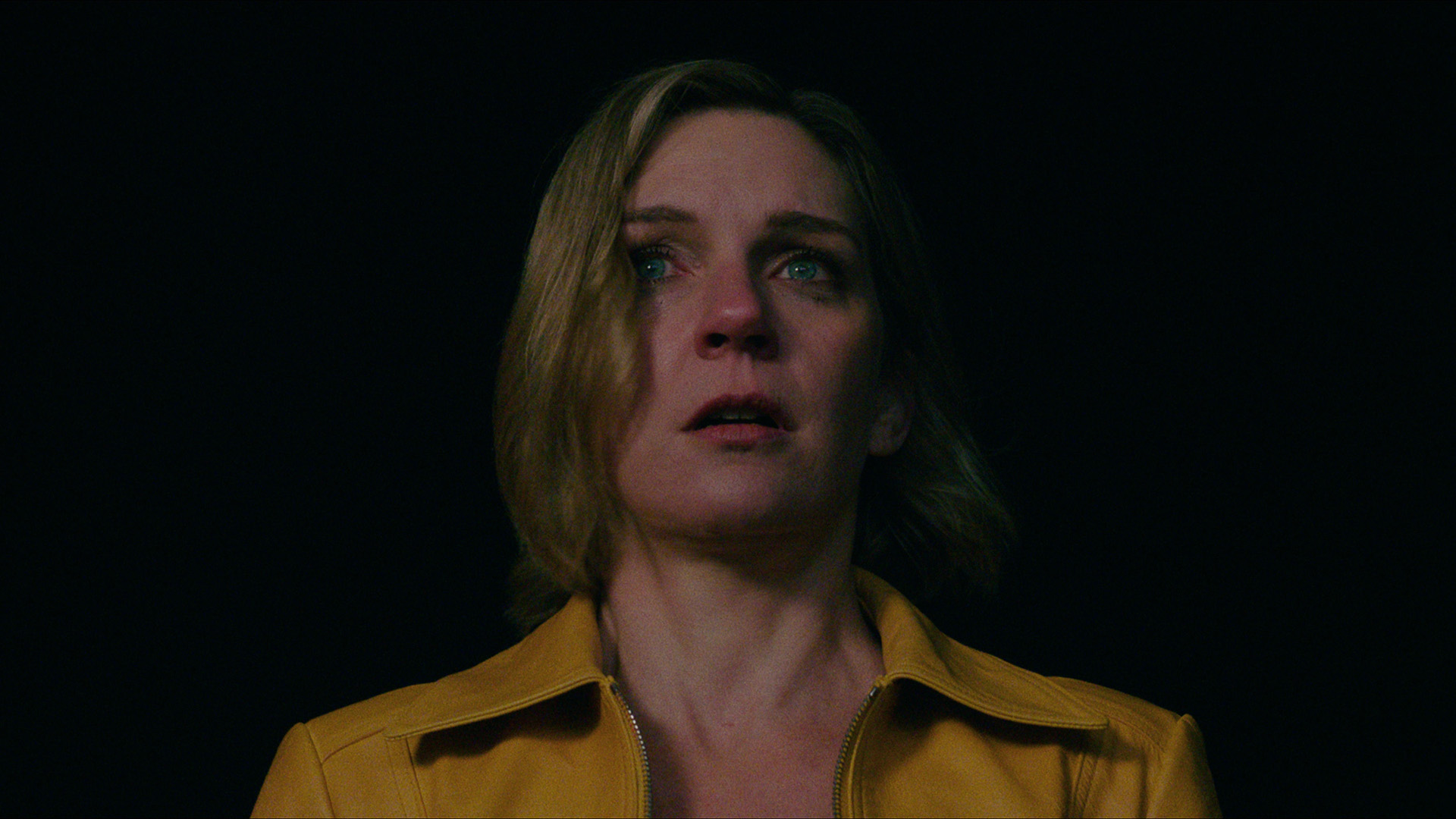GamesRadar+ Verdict
Lorelei and the Laser Eyes is an intricate puzzle box of interconnected parts. At times it can feel overwhelming, but ultimately this stylish noir's captivating puzzle design anthology and spellbinding story feels like an entirely new and contemporary kind of puzzle game.
Pros
- +
Endlessly inventive puzzle design that all seamlessly interconnect
- +
An intriguing story that blurs timelines, dreams, and illusions that'll grip you from beginning to end
- +
Black and white art style and surrealist visuals are effortlessly stylish
Cons
- -
Downtime between puzzles can be frustrating
Why you can trust GamesRadar+
If developer Simogo's previous game Sayonara Wild Hearts was an upbeat electropop arcade adventure that made your heart soar, the studio's newest game Lorelei and the Laser Eyes is a hyper-focused black and white expressionist Swedish noir with the subtitles turned off. Both are set in dream-like spaces and where Sayonara Wild Hearts captured the lofty fantasy of a woman in love, the woman in Lorelei and the Laser Eyes has crossed an astral threshold into a logic-melting dream dimension, complete with endless espresso refills. Its puzzles are spellbinding, its surrealist world is effortlessly stylish, and it's without a doubt one of the best puzzle games of 2024.
Release date: May 16, 2024
Platform(s): PC, Switch
Developer: Simogo
Publisher: Annapurna Interactive
Lorelei and the Laser Eyes begins with the Letztes Jahr Hotel, a sprawling building hiding a labyrinth of rooms and a bloody history. Playing as an unnamed woman summoned by a mysterious letter, you're tasked with exploring the building and solving its many, many puzzles. Almost immediately you're inundated with its impossible architecture and abundance of locked doors and strange objects. The first handful of rooms house keypads with odd symbols, a clock featuring zodiac signs instead of numbers, a group of twisted statues, a broken elevator, and red footprints leading further into the hotel, coaxing you deeper into its jaws.
It's a place with incredible presence, and during my first hour, I simply mapped out the hotel. One aspect that particularly drove my curiosity – as strange as this might sound – is trying to work out when Lorelei and the Laser Eyes is set. There's an odd mix of set pieces, like how the hotel's aesthetic feels like it's from the 1960s but there are antiques from the 1800s and computers from the 2010s. The hotel is an enigma and wouldn't feel out of place on the same street as the twisting Finch family home in What Remains of Edith Finch and the ominous Oldest House in Remedy's Control. It's intimidating, if utterly alluring.
Mystery box
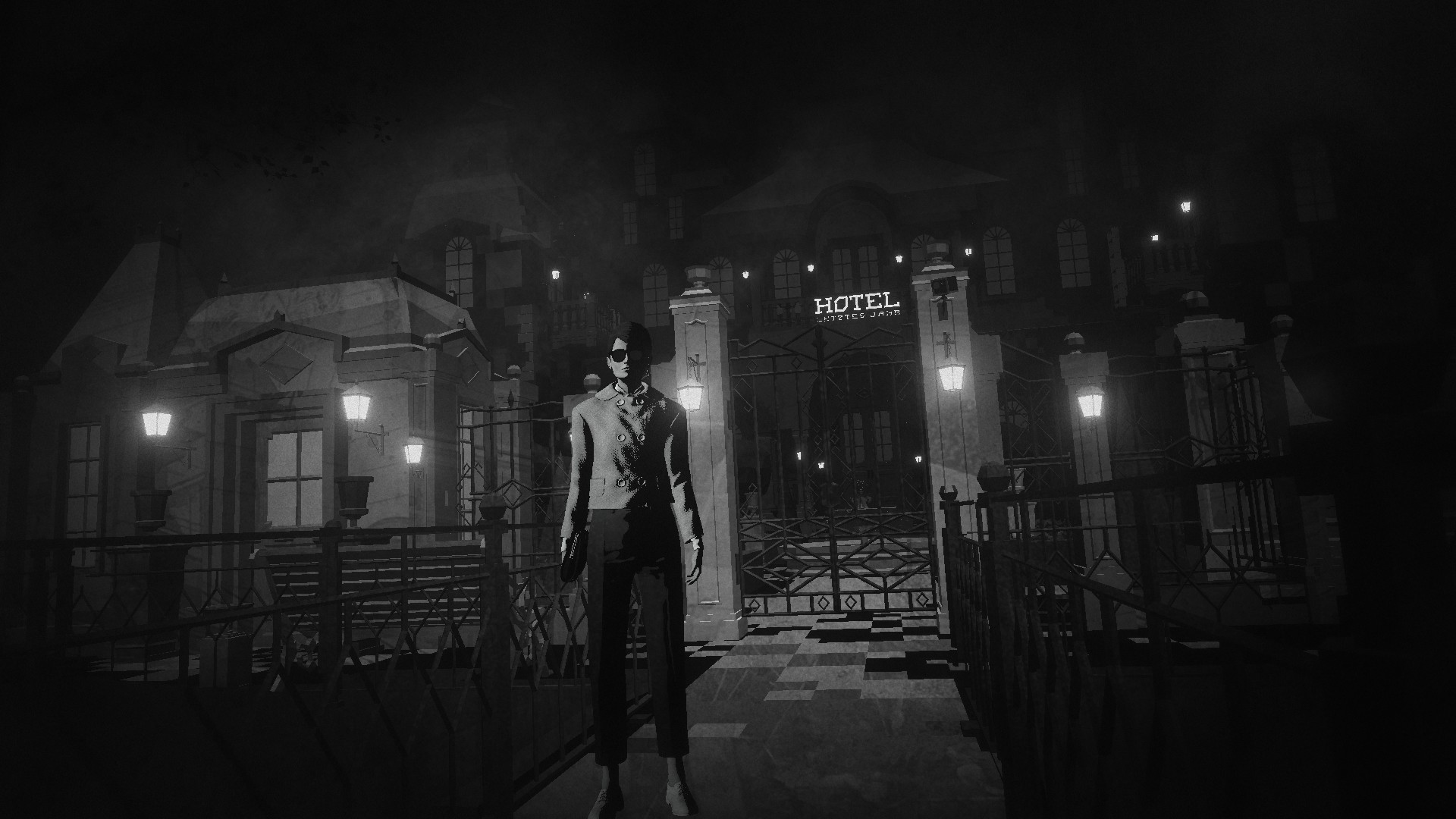
The Letztes Jahr Hotel doesn't greet its guests with niceties, instead opting to bombard you with a torrent of puzzles. There's pattern spotting, math problems, wordplay, riddles, hidden symbols, cypher decoding, and they're baked into every nook and cranny of the space. The way they're presented changes too. There are puzzles with text-based commands, object interactions, perception shifting, and environmental manipulation. I can't emphasize enough how important a pen and paper are here – and don't just settle for a single Post-it note. My notebook was covered in scribbles with everything from the Roman numeral system to the moon phases during one week in 1846.
Lorelei and the Laser Eyes is like a mesmerizing anthology of different puzzle designs written by David Lynch. I worked out the telephone number of a dead person and when I called them, they answered. I've had a fortune teller tell me a set of directions using compass points inside the theater of the mind. My most dangerous venture was navigating a maze in a weird astral plane where magicians armed with revolvers quizzed me about the hotel's history, and if I answered a question wrong I got a bullet between my brows.
But Lorelei and the Laser Eyes' biggest puzzle is piecing together its fractured story. These are told non-linearly through the information you gather as you're solving puzzles. There are dates to memorize, different timelines to follow, and histories to unravel that may or may not include a super secret society and a not-so-metaphorical crimson beast skulking somewhere in the hotel. There's also the strange cast of characters who all seem connected to this hotel. Keeping track of who's who and what role they play in this twisted story is all intertwined with strange, surreal iconography. Everything is drenched in slick black and white with the occasional shock of neon red. A little girl is wearing an owl mask who acts as your sort-of guide and a floating phantom with a maze for a head that stalks you. The story is engrossing and is always keeping you on your toes until the very end.
A-maze-ing
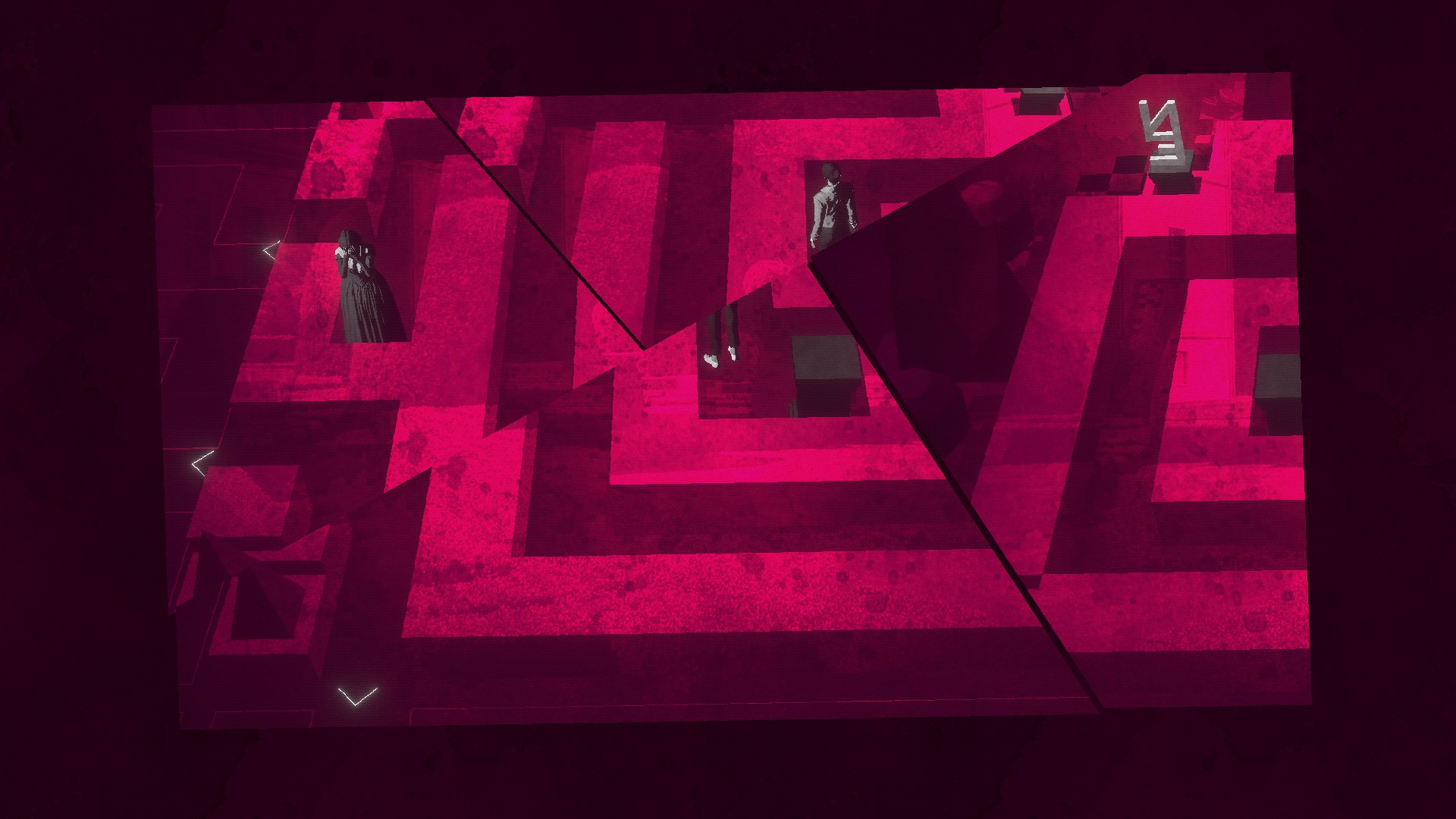
The most impressive aspect of Lorelei and the Laser Eyes is how the story and puzzles are so closely interconnected. Puzzles aren't just plonked in the middle of its story but are deeply embedded in its world-building. Details found in story snippets are often the answers to puzzles, and vice versa. What's a clue and what is just a story detail begin to blur, and often phase into one. I've never played a game where the distinction between puzzle solutions and story beats has been so closely intertwined around each other. No singular piece of information is an island, but part of a wider interconnected map of puzzles and story.
Weekly digests, tales from the communities you love, and more
This is where Lorelei can feel especially overwhelming because it has no issue throwing you headfirst into the deep end. Rifling through your notes and knowing what piece of information to apply to the right puzzle is a puzzle in itself, and there were several times when I was met with analysis paralysis. I had a whole library of information but couldn't work out what needed to be applied where. I didn't understand what the puzzles wanted from me, so I would bounce from room to room, searching for the smallest connection to my pages upon pages of notes.
This downtime, although infrequent, can be frustrating. I felt like a rat in a maze going in circles, scratching at the walls. Lorelei and the Laser Eyes does its best to help you while also keeping an elusive distance. There's a log tracking what you've done, a checklist of things you need to do, and every piece of information you've discovered is readily available in a handy 'photographic memory' menu. Clues to puzzles will be highlighted with dashes and blots of red paint. But even with all that, sometimes it's not enough, and it feels like you're drowning in information.
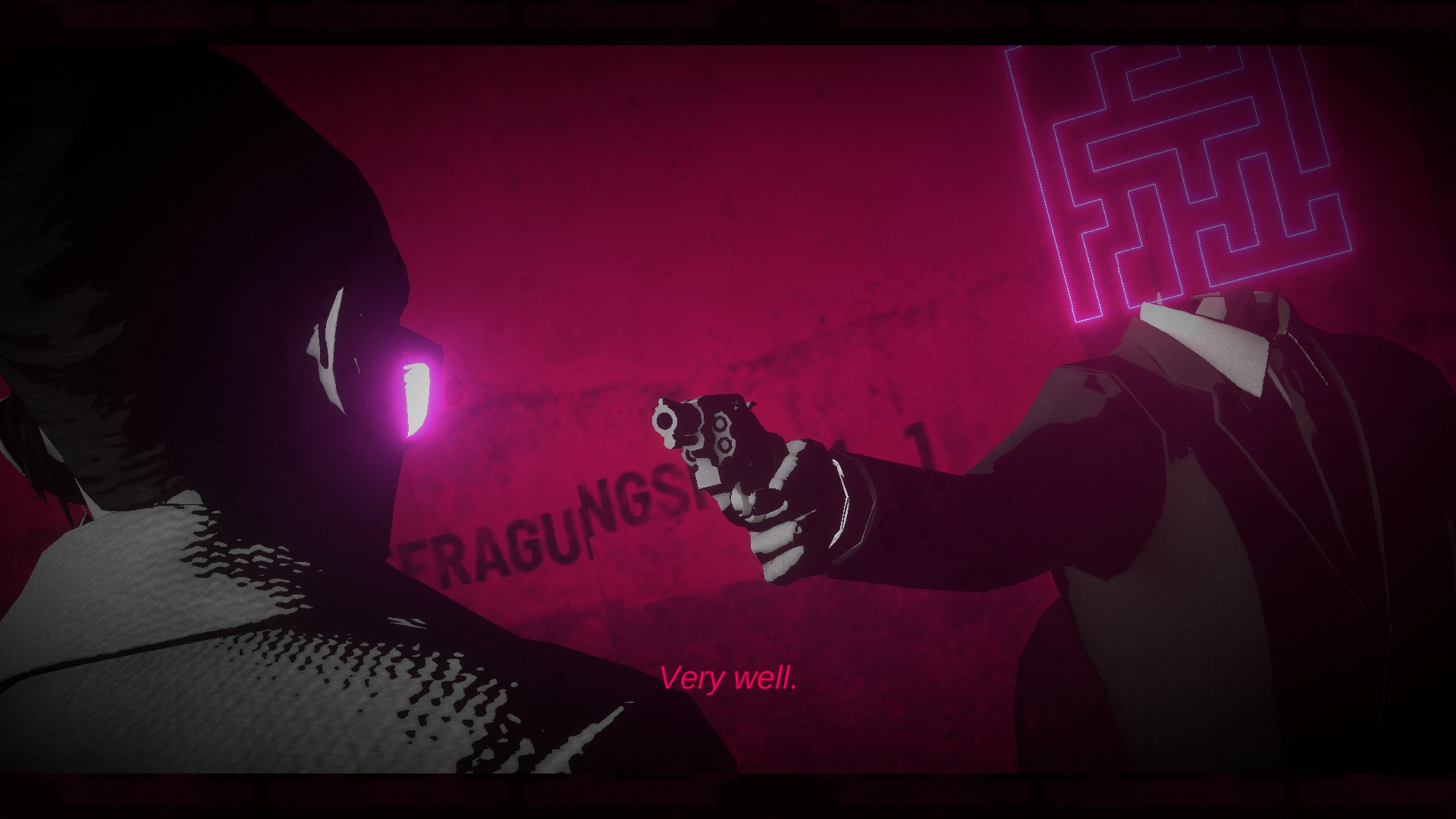
But when you do get back on track, Lorelei and the Laser Eyes wills you into a rapid flow of puzzle-solving. Since everything is connected, one solution will cascade into working out how to solve the others. The key takeaway from each puzzle is not the solution itself but how you solved it, and once I embraced that rule it was like my brain was directly connected to Lorelei's matrix and I had a much deeper understanding of the game. It's strange, but in this way, Lorelei almost feels like a Metroidvania. I'm working my way through space with many of its areas locked away, but instead of tools and upgrades, I have mentally stored information, together with a dusty book on astrology, an ace of spades stained with a coffee ring, and a ripped poster for a movie about a man's obsession with a dead cat.
There are echoes of Tunic, The Witness, and Return of the Obra Dinn in its puzzle design, the surreal atmosphere of Kentucky Route Zero, and the previously mentioned Control and What Remains of Edith Finch, but above all else, Lorelei and the Laser Eyes is an entirely new and contemporary kind of puzzle game. Simogo has created a brilliant enigma, that's endlessly inventive with its puzzle design and engrossing with its gripping story. Up until the very end, I was never quite sure if I was exploring a hotel, a living art exhibition, an elaborate magic trick, a grand deception, or an eccentric artist's final statement. No doubt you're part of some sort of performance, but Lorelei's biggest mystery is: What role will you play?
Lorelei and the Laser Eyes was reviewed on Switch, with code provided by the publisher.

Rachel Watts is the former reviews editor for Rock Paper Shotgun, and in another life was a staff writer for Future publications like PC Gamer and Play magazine. She is now working as a freelance journalist, contributing features and reviews to GamesRadar+.
